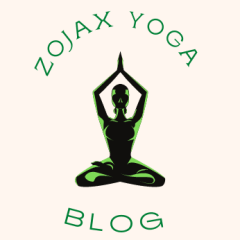We stretch and bend the body towards the outstretched leg without holding it with our hands in Great Sage Pose I (Marichyasana I ).
The abdominal muscles and organs contract strongly and energetically in order to rest the head on the knee of the outstretched leg, which improves blood circulation and keeps them healthy.
Great Sage Pose I (Marichyasana I ) is mostly used to strengthen the upper back.

Photo by Elina Fairytale:
Step by step instruction
1. We sit in Dansana ( Staff pose ).
2. Bend the left knee and place the left sole flat on the ground so that the shin is vertical and the leaf touches the back of the left thigh. Bring the left heel closer to the left sciatic muscle. The inside of the left foot should touch the inside of the right thigh while holding the same side of the left thigh along the left side of the torso. Fix the outstretched right leg, “ground” the head of the right femur to the ground, press the right heel.
3. As a preparation for the final pose, we turn the torso slightly to the right, extend the left hand forward and turn it inwards so that the thumb is directed towards the ground and the palm to the left. We stretch the left shoulder until the left armpit is next to the left shin. Then we slowly turn to the outstretched leg. With the exhale, we wrap the left arm, bending it at the elbow, around the left lower leg and the outer side of the left thigh so that the left hand (back) is on the thigh or the left sciatic muscle. Let’s use this movement to stretch the left side of the torso along the left thigh.
4. With the next exhalation, we swing our right hand behind our back and grab the right wrist with our left fist. If this is impossible for us, we grab either the fingers or the palm of the right hand. We turn the spine to the left side and stay in this pose for two cycles of breath while looking at the big toe of the outstretched right leg.
5. With the exhale, stretch the torso forward from the groin, lengthen the lower abdomen and descend to the right leg. We try to lower our head all the way to our knees. We touch the first knee with the forehead, then the nose, lips and finally rest the chin on it. We keep both shoulders parallel, pull the shoulder blades down the back and secure them.
6. We stay in the end pose for 30 seconds to 1 minute, breathing calmly and evenly.
7. With the inhale, we stand up, release the arms, extend the left leg next to the right in the initial position, Dandasana. Repeat on the other side (bend the right leg and the left is outstretched-as in the picture) with the same time retention in the final pose.
Notes:
- Due to the rigid and insufficiently elastic groin, we may have difficulty approaching and holding the thigh of the bent leg along the same side of the torso, which makes it difficult to move the arm around the leg. We make this move easier by, when we extend the arm and stretch it from the shoulder forward, in preparation for the final position (point 3), we grab the shin of the bent leg with the opposite hand and pull the thigh against the torso.
In order to get down easier and closer to the extended leg, it helps to sit on a roller or a thinly folded blanket. This is especially recommended for inexperienced yoigs.
- People who have difficulty grasping the wrist, even with the grip of the fingers, are helped by a belt that they hold tightly between their hands.
- When we enter the end pose, we can increase the stretching of the shoulders and chest by lengthening the front part of the torso by stretching the arms back, away from the torso and slightly straightening the elbows.
Therapeutic benefit of Great Sage Pose I (Marichyasana I )
- bloating
- constipation
- obesity
Benefits of Great Sage Pose I (Marichyasana I )
- calms the brain
- stretches and strengthens the spine and shoulders
- stimulates and strengthens internal organs, especially the liver and kidneys
- improves digestion
Contraindications, warnings and precautions:
- asthma
- diarrhea

